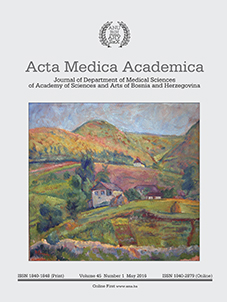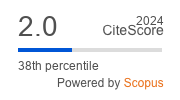The prevalence and severity of early childhood caries in preschool children in the Federation of Bosnia and Herzegovina
DOI:
https://doi.org/10.5644/ama2006-124.152Keywords:
Early childhood caries, Oral health, Behavioral factors, EpidemiologyAbstract
Objective. The aim of this study was to assess caries prevalence and severity in preschool children in the Federation of Bosnia and Herzegovina. In addition, the relationship between the frequency and
clinical types of early childhood caries and behavioral factors, oral hygiene and eating habits were assessed. Subjects and methods. An oral health survey was performed in line with the World Health
Organization methodology and criteria. The research consisted of clinical examinations of children to determine dentition status, oral hygiene and severity of caries distribution according to Wyne’s classification. Information about behavioral factors was collected by means of a questionnaire administered to parents/guardians. Results. The sample consisted of a total of 165 preschool children aged 3-5 years. Mean dmft (decay, missing, filled teeth index for primary dentition) was 6.79. The percentage of caries-free children was 17.0%. The results showed a statistically significant correlation between oral hygiene and eating habits, and also the frequency and types of early childhood caries. Conclusion. The present study demonstrates high caries prevalence in preschool children in the Federation of Bosnia and Herzegovina. Community based preventive programs should be developed and urgently implemented, in order to achieve the WHO goals, improve oral and general health, thus improving the quality of life of these populations.





